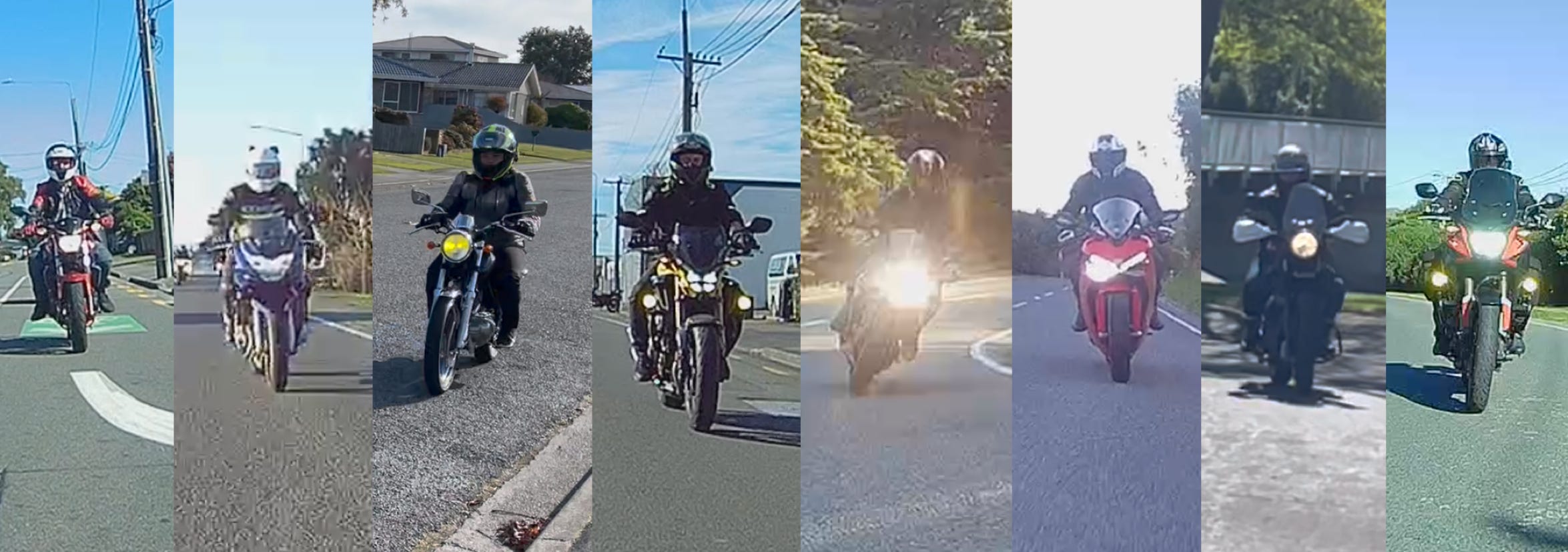Riding in complete darkness
This is where things get much more serious, many more issues can occur that otherwise you would’ve seen sooner and reacted differently when under street lights.
Complete darkness turns any motorcycle rider into a blind mole. It is pretty hard job to feel your way around the darker countryside roads so a few extra considerations do apply.
Slow down, ride to the conditions
Ride to your own vanishing point ahead with no assumptions. You cannot see the layer of road grit around the next corner, nor the pot holes arriving, or anything like dog walkers or other non-vehicle items that may cross your path you cannot see easily.
Do not attempt to ride in frozen temperatures when no traffic exists as black ice and a lack of traffic to warm up the road surface will create traction issues for any vehicle. But the difference is a motorcycle rider is not in a rolling “safety” cage and is prone to injury via trees, side rails and other immediate objects like parked vehicles on the road sides in the event you slide off the road surface due to black ice.
Road positioning
You might go from riding with good road positioning during daylight hours to suddenly squaring off corners and cutting center lines on the road at night…
Why? Because you are trying to turn the motorcycle so you can see where you need to go with the motorcycle head light vs riding the same corner section in daylight hours where you maintain good road positioning.. See target fixation item below!
Positioning errors in complete darkness is directly related to your speed travelled.
Watch out for target fixation
If you do not look beyond the immediate illuminated area in front of you, potentially you will target fixate on your own head light illumination area as that is what you are focused on.
This effect is even more apparent when using auxiliary high powered lights that are fixed on the motorcycle as it actually creates more light pollution and glare the rider cannot see past.
When a road sign illuminates and reflects from your own head light, it’s same sort of light pollution that is reflected back at you, the rider cannot see further ahead through corners as its not pointed at the corner exit and the rider’s vision is essentially light polluted in those moments.
Corners
The motorcycle head light typically cannot look upwards and through corners while the motorcycle is turning and actually you will not see road reflectors soon enough as the light is not shining through the corner. Slow down and ride to your vanishing point.
We have a comparison video using a helmet light further down below (Not road legal, but much safer!)
On coming vehicles
You may (will) get blinded by vehicle head lights coming towards you in the middle of a corner or not even see a corner approaching on long straights as oncoming lights can pollute your vision with strong light glare. This prevents you from effectively seeing anything else beyond the light glare and that can include where you might be headed!
One trick is to close one eye (assuming you have two eyes!) when vehicles approach your motorcycle at night and once they have passed, when that one eye is re-opened it is not re-adjusting to the dark landscape after the bright headlights.
Some vehicles may not be even driving/riding to their own ability and may actually be on your side of the road coming towards you, that can be a hard situation to manage as you can’t see a exit path or strategy ahead due to the light glare coming towards you.
Vehicles coming from behind
Most vehicles are patient and drive/ride to the conditions but if you are actually holding up traffic flow to the point of inconvenience as you cannot see further ahead or are uncomfortable, pull over only when there is somewhere safe to do so like a slow vehicle lane and let them pass.
You may have to adjust your side view mirrors so vehicle head lights are not directly shining in your eyes while riding. Position the mirror slightly so you just need to move your head a little more to see behind you without being constantly blinded from behind.








